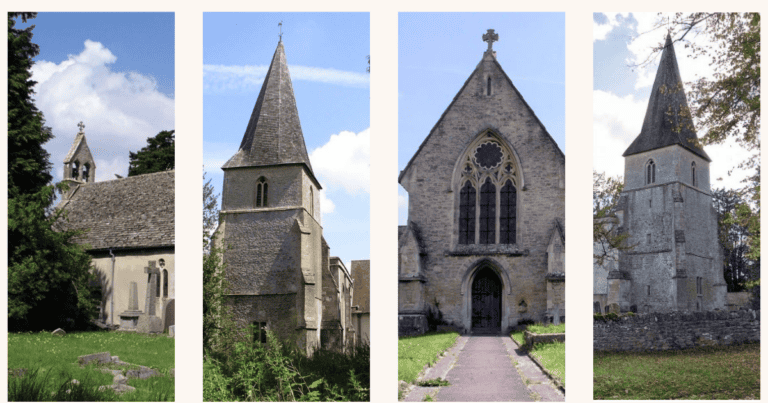
St Mary the Virgin, Childrey
A fine cruciform church dating from the late twelfth or early thirteenth century, and with later additions including the crenellated west tower, set at the north end of the village. The range of dates is apparent as soon as you enter: you go through a sixteenth-century porch to reach the twelfth-century south door.
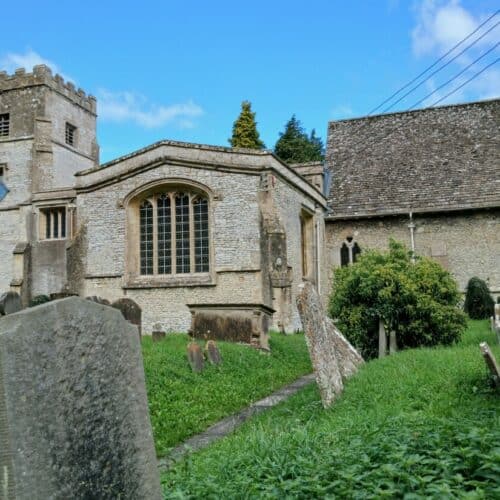
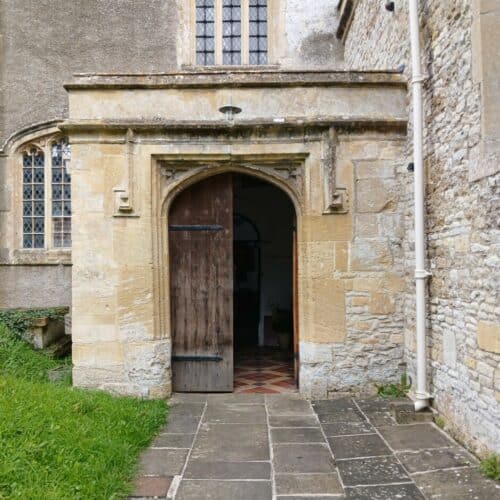
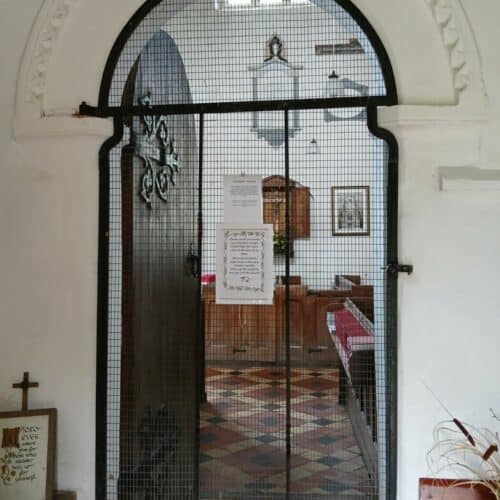
Inside, there are a range of treasures; this is definitely a church to savour and spend time with. Among its treasures are a moulded lead font with twelve figures of abbots (or bishops?); a finely carved Easter sepulchre, an effigy of a medieval knight, and a range of excellent brasses (including a tomb with inlaid memorial figures commemorating two more members of the Fettiplace family so frequently encountered in the region).
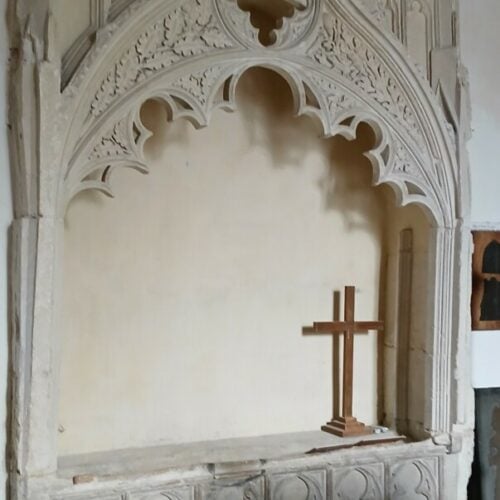
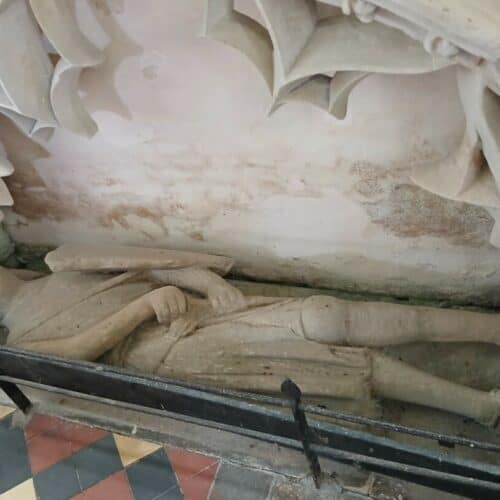
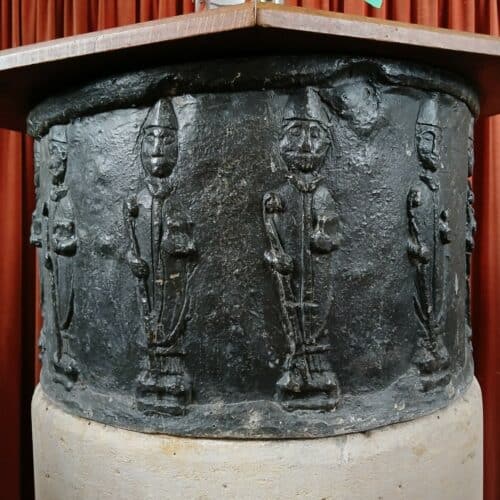
Holy Rood, Sparsholt
While the north door of this church is Norman, the building now mainly dates from the first half of the first half of the fourteenth century. From the road the key feature is the (late thirteenth-century) west tower, with its later shingled broach spire.
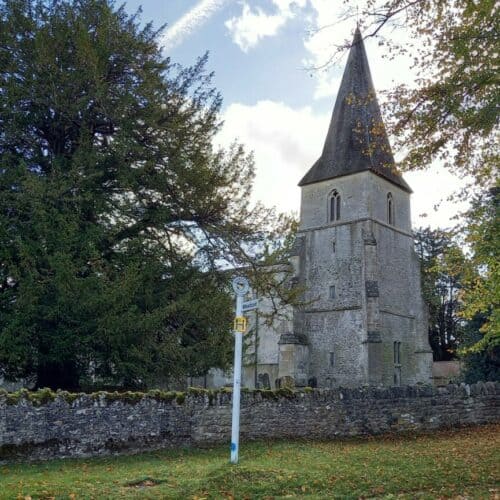
Inside, like Childrey, it is full of treasures especially from the medieval period. The south wall of the south transept has two tomb recesses, one with a row of mourners on the tomb chest. The recesses now house two over-life-size oak effigies of the fourteenth century (a third effigy is placed at right angles to them along the wooden screen dividing the transept from the nave. The effigies, which are not where they would originally have been, apparently represent Sir Richard Achard, Lord of the Manor, and two of his wives. They are placed in the tomb recesses, while Sir Richard’s effigy lies at right angles to them. The carving is very finely done showing the folds of material in the wimple of one of the wives. One wife rests her feet on an agreeable lion.
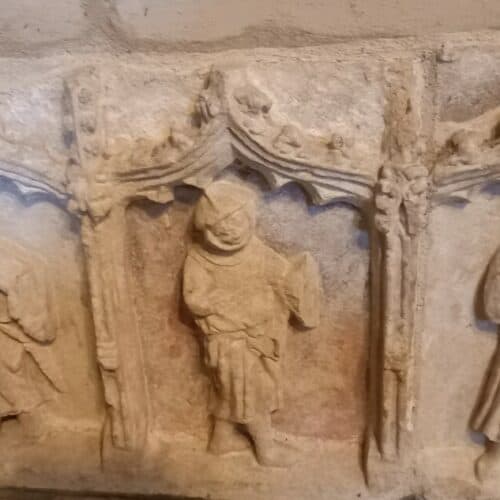
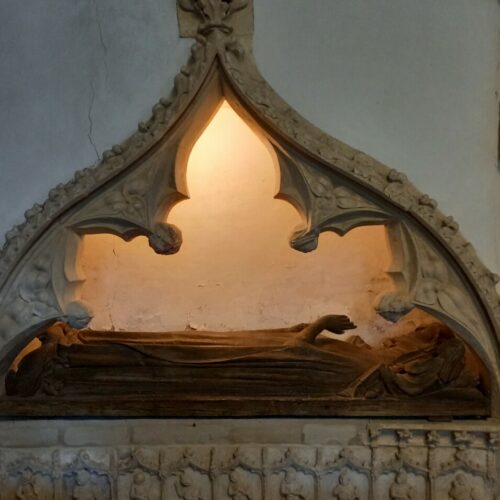
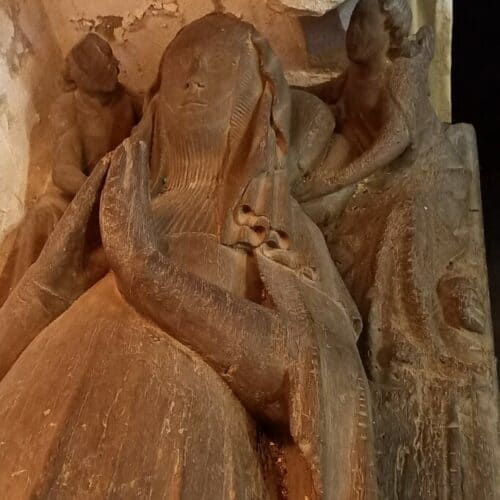
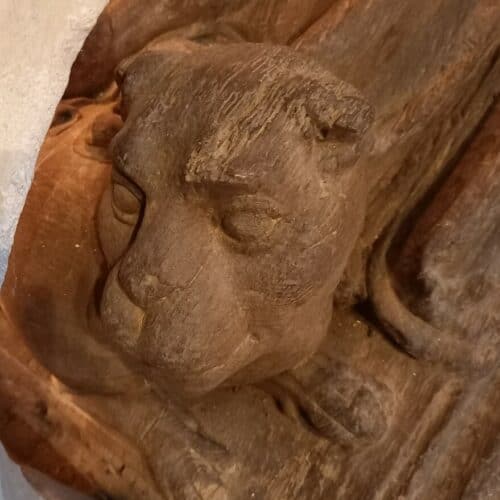
There are also some good memorials of a later period. A fine chalk tablet on the south wall of the nave commemorates John Pleydell (d. 1591) and his wife (d. 1623). The detailed carved decoration includes strapwork and finely worked supporting heads.
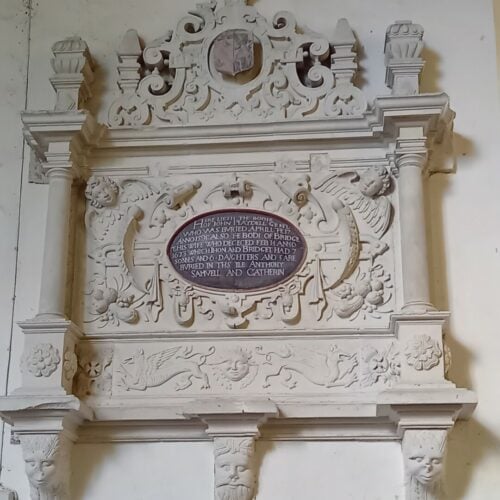
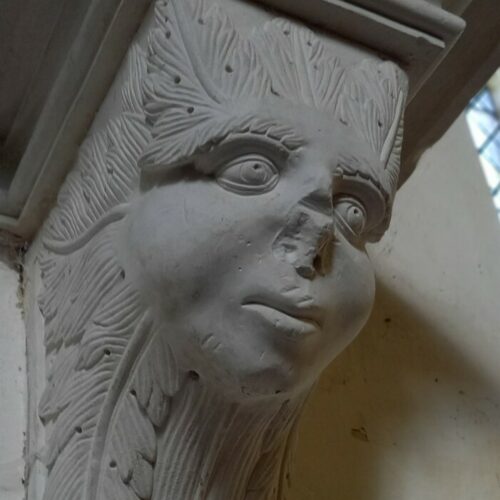
St Lawrence, West Challow
A small medieval church with an aisleless nave and chancel and a double bellcote. The north porch is fifteenth century, and has what the revised Buildings of England volume for Berkshire calls ‘richly carved bargeboards’: I had to consult the glossary to learn that these (perhaps etymologically a
corruption of ‘vergeboards’) are boards set below the eaves of a gable to cover and protect the rafters). Inside the church is light and peaceful. It belongs to the network of Small Pilgrim Places, and feels a very good fit with the concept.

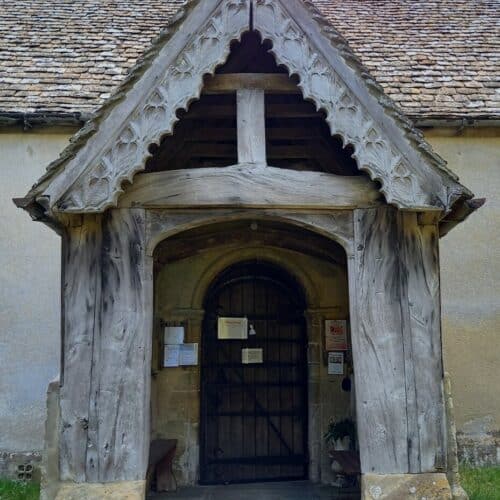
St Nicholas, East Challow
A medieval church with a low square nineteenth-century tower. Inside the nave, chancel and south arcade are all from the thirteenth century, although the roof of the nave was then raised in what BoE calls a ‘drastic restoration’ in 1858-9. Apparently the tower was never completed, which explains its lack of height. The early twentieth century saw the installation of a number of fittings, including an Arts and Crafts Rood screen.
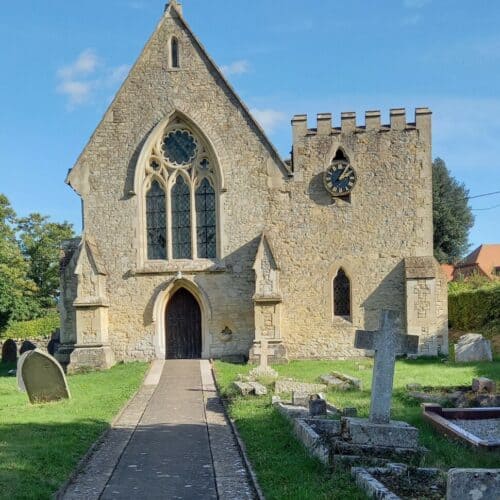
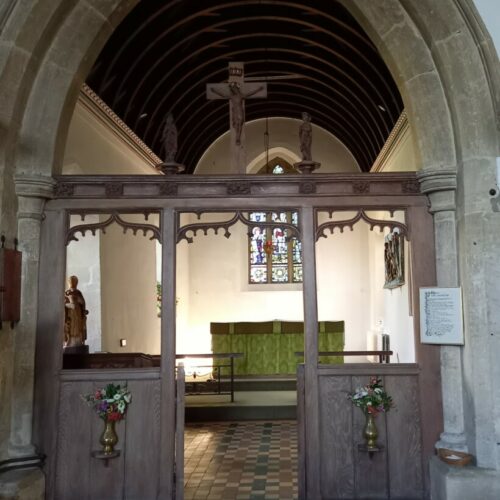
By Elizabeth Knowles
About the Author

Elizabeth Knowles is a renowned library researcher and historical lexicographer who devoted three decades of her career to Oxford University Press. Her time at OUP began with contributions to the OED Supplement and the New Shorter Oxford English Dictionary. Subsequently, she spearheaded the Quotations publishing program, solidifying her reputation as a leading expert in quotations and lexicography.
In 1999, Knowles assumed the prestigious role of Editor of the Oxford Dictionary of Quotations, a position she held continuously until her retirement from OUP in 2007. Under her editorial guidance, the eighth edition was published in 2014, marking a significant milestone in the dictionary’s history.
Knowles is a prolific writer and lecturer on the history of quotations and dictionaries. She has shared her extensive knowledge with both academic and general audiences, significantly enhancing our understanding of the role of quotations in language.
Beyond her work on the Oxford Dictionary of Quotations, Knowles is also the editor of “What They Didn’t Say: A Book of Misquotations” (2006) and “How To Read a Word” (2010). Her work continues to inspire and inform scholars, writers, and readers fascinated by the English language.
All photographs © Elizabeth Knowles unless otherwise noted
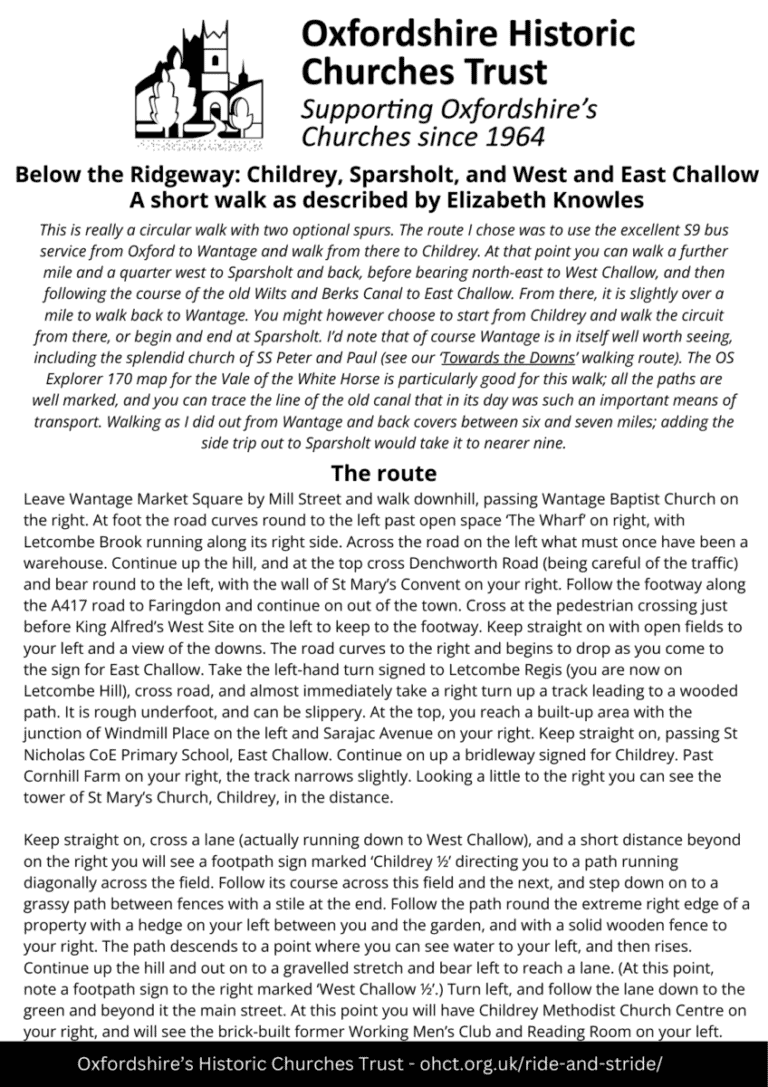
Churches visited on this route